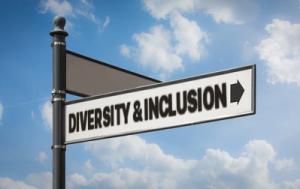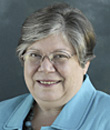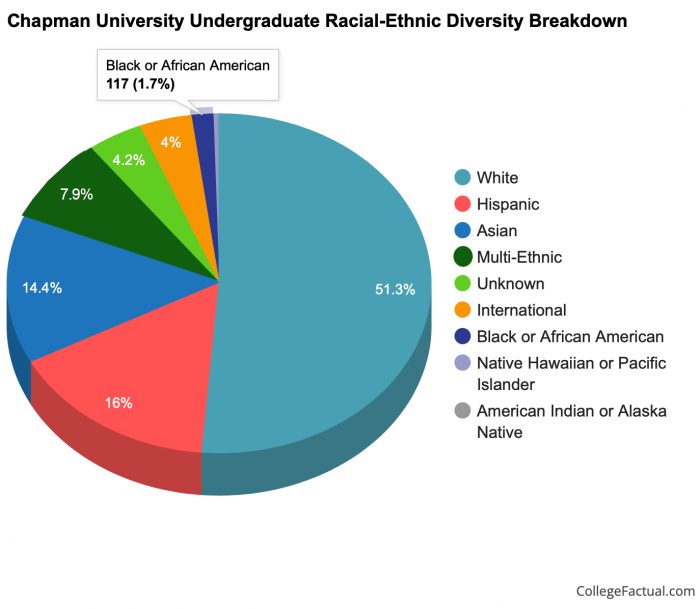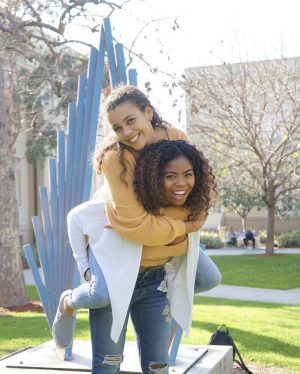
No one wanted to step up as the new president of Chapman’s Black Student Union after last year’s turmoil, which saw protests, controversies, and the resignation of all former members of the club’s executive board.
No one, except Kari McMiller.
And she was terrified.
“I feel like everyone’s eyes are on us sometimes,” said McMiller, a junior integrated educational studies major.
In summer 2020, the Black Student Union (BSU) submitted to Chapman a call to action to facilitate greater inclusion, in the form of a 12-point action plan. As new president of the organization, McMiller said seeing the plan through is still a “top priority” for the BSU, despite having an entirely new executive board. Strides have already been made.
However, according to faculty, university-wide changes take time.
The Faculty Roadmap for Diversity and Inclusion, adopted September 2020, aimed to add a diversity requirement to the general education program beginning this 2021-22 academic year. This would require students to enroll in at least one course that directly addresses ethnic and racial diversity, in the same way students already take the typical math, science or written inquiries.

According to Nina LeNoir, vice president for undergraduate education, “Any such curricular change takes a bit of time, since it has to be approved by committees, councils and faculty senate, and may take time to actually implement, depending on what is finally approved.”
In an Oct. 13 email, LeNoir explained that while the process is lengthy, plans are in motion to get a proposal to the faculty senate by the spring. The development of any new courses or the need to hire new professors could mean implementation of the new requirement won’t happen until the 2023-24 academic year.
But, if the senate approves the plan and requires no new curriculum or hiring, incoming freshman classes could see a diversity requirement added to their general education as early as next year.
“So, there is movement forward,” LeNoir said.
Chapman’s strides toward a more diverse curriculum reflect a greater trend in education. Just recently, Gov. Gavin Newsom signed a bill to require ethnic studies for high school graduation, making California the first state to do so.
“I think that’s really good,” McMiller said. “I wish we had that in high school.”
On Chapman’s campus, black students make up just 2% of the student population. The university has been steeped in several racially charged controversies, including protests over the display of “Birth of a Nation” posters at Dodge College of Film and Media Arts in 2019, and law school professor John Eastman’s involvement in the Capitol riot earlier this year. (Eastman, a huge Trump supporter, spoke to rioters on the same stage as the president just before the march on the Capitol.)

According to a report by the Orange County Human Relations Commission, 112 hate crimes were reported in Orange County in 2020, a 35% increase from 2019. In addition, 263 hate incidents were reported, a 69% increase.
In California, the attorney general defines a hate crime as “a criminal act committed, in whole or in part” due to prejudiced motivations, whereas a hate incident is “a behavior motivated by hate or bias… but is not criminal in nature.”
Of those 112 hate crimes, around 30 were anti-Black.
With racial tensions heightened in the surrounding Orange County area and Chapman’s reputation marinated in racial controversy, the experience of Black students on campus is one of unease and isolation.
Lack of engagement from the community and from the university is what ultimately led the former executives — Ramya Sinha, Sage Okolo, Promise Johnson, Sofia Montgomery and Haleluya Wondwosen — to resign, explained a March 18 Instagram post.
“I was kind of worried when they stepped down, but I wasn’t mad at them,” McMiller said. “You can’t be mad at that.”
Upon the formation of the new board, McMiller said staff from the university reached out to her to offer their support.
Though Chapman is still working to implement the new diversity general education requirement, there are some items laid out by the 12-point action plan that have already been fulfilled.
For example, an ethnic studies minor was approved by the university just this fall semester.
“Understanding other cultures and other perspectives in the world is key to critical thinking. One of the reasons we go to college is to gain diversity of perspective,” Stephanie Takaragawa, co-director of the new program, told the Wilkinson Blog.

Furthermore, the former BSU executives asked for a re-hiring of the case manager position, which had been vacant for months. Miguel Calderon stepped into the position in February 2021, and serves as an essential piece “in supporting and allocating different types of resources to marginalized students,” according to the action plan.
In July 2021, Chapman hired Reginald Chhen Stewart as the first vice president of Diversity, Equity, and Inclusion. This fall marks Stewart’s first semester as the senior strategist for on-campus diversity and inclusion efforts, and will see Stewart working closely with both students and faculty in the community.
“I think it’s so important for people to be educated on the differences that are around them,” McMiller said. “And kind of just understand that, you know, they’re not the only people going to the school, that there’s bigger things around you that are also important for you to recognize.”
So where are we now?
The answer may be: getting there. After the university aimed to expand outreach and recruitment through the Office of Admission, the class of 2025 will be the most diverse in Chapman’s history, with a little over half identifying as either Black, Latinx, Native-American, Pacific Islander, or of multiple identities.
As for this year’s BSU board, McMiller said they will continue to advocate and speak up, and will focus on events that will bring people together.
“It’s definitely stressful,” McMiller said. “But I think it’ll be all worth it once everything comes together.”

Megan J. Miller is a senior studying journalism and documentary film. When she isn’t writing, you can find her working on her ’95 Bronco, exploring new hiking trails, or scouring the thrift stores for the best vintage finds.
Megan J. Miller is a senior studying journalism and documentary film. When she isn't writing, you can find her working on her '95 Bronco, exploring new hiking trails, or scouring the thrift stores for the best vintage finds.
